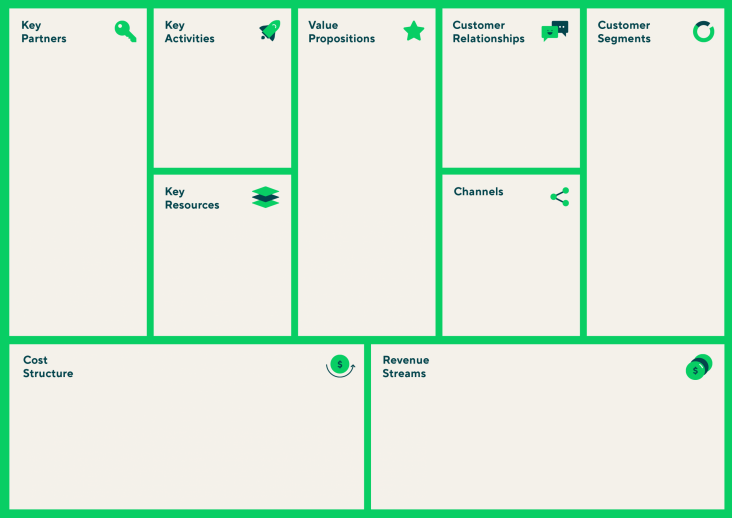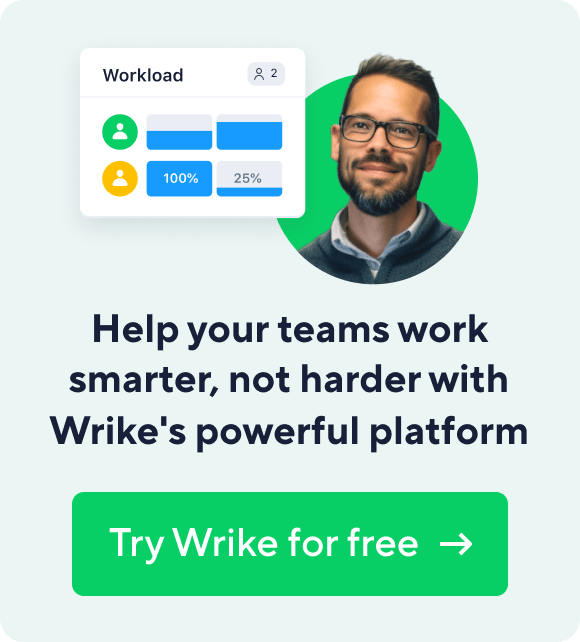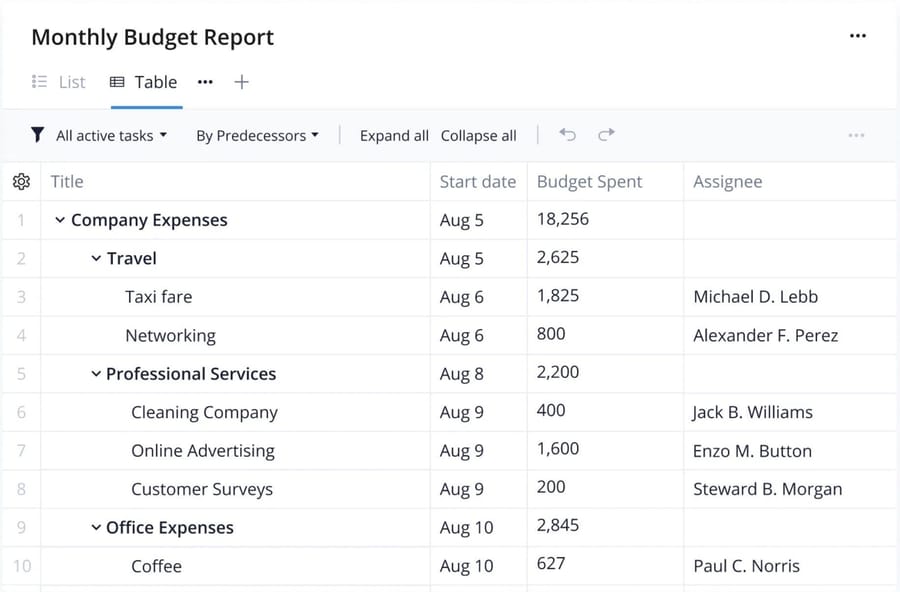Key takeaways:
- What is a business model canvas? This is a visual framework that simplifies a business plan by outlining nine core elements, enabling teams to focus on strategy without lengthy documents.
- How does it promote customer focus? It helps teams prioritize customer needs and value propositions, ensuring that product development aligns with end-user demands.
- What are the benefits of using a business model canvas? Its simplicity, actionability, flexibility, and scalability make it ideal for evolving businesses seeking clear strategies.
- How does it facilitate team and investor buy-in? By providing a clear, visual representation of the business model, it aids in aligning team goals and attracting potential investors.
- Why should anybody consider a lean model canvas? For startups or early-stage businesses, it offers a streamlined approach by emphasizing problem-solving and identifying unique advantages.
Do you want to create a simple business plan? Something comprehensive, flexible, and easy to scribble on a napkin? You can do that with a business model canvas.
Every business has ever-changing, diverse interests. Illustrating all of this on a single sheet of paper may sound challenging — but by using a business model canvas template, your team can focus on the key elements of your business to ensure nothing slips through the cracks.
Business model canvas explained
"Lengthy business plans often increase the risk of failure," wrote Alex Osterwalder in his 2008 book “Business Model Generation.”
The business model canvas offers a way to avoid this, providing a simplified version of a business plan. A business model canvas is a simple, visual framework that helps teams outline the most fundamental elements of a business.
As a handy business tool, teams can use a business model canvas to map the nine core areas of a business, such as customer needs, value proposition, and platforms for customer acquisition.
This article will explain the business model canvas, its benefits, and how it can help your team develop a successful high-level business strategy and actionable roadmap.
How can a business model canvas help your business?
Many teams are so overwhelmed with operational issues that they don’t have time to focus on the core business strategy.
Utilizing the business model canvas helps create a unified framework that depicts this strategy alongside an action plan that teams can follow.
But how do you know if you need a business model canvas? If you are starting a business or even toying with an idea, a BMC can create a powerful visual representation of your concept. A business model canvas can also be a handy reference for your team as they move towards successful business outcomes. Here are five more ways in which a business model canvas can help your company.
It’s simple and easy to follow
Whether you have a business idea or are managing a large enterprise, having an easy-to-follow business plan can be immensely helpful. As a precise one-page document, teams can modify specific business model canvas elements as they go along without completely redoing a 50- or 100-page document.
Focused on being actionable
Every business plan needs to be actionable. Using a business model canvas helps you accurately define your organization’s core value proposition and keep it aligned to your business strategy.
Your focus could be to achieve profitability in the first year or gain a large market share. Stay competitive by defining actionable steps for your team within the business model canvas.
Flexible and scalable as the business evolves
No business stays the same forever but evolves as it interacts with diverse market dynamics, competitors, product innovations, and changing consumer needs.
To take your idea to market, you need a tool that connects the dots between what your customers want, your business’s unique offering, and the desired profitability streams.
By creating a business model canvas template, you instantly get an edge over other market players engrossed in lengthy business plan documents.

Puts the customer first
Ignoring customers sets businesses up for failure. Companies flounder if they direct their energies solely towards making a great product or service. With a business model canvas template, your focus stays on the ultimate end-users of your product.
Having a business blueprint will force team members to think about what customers want, the primary issues they need help with, and how your product or service can do that.
Helps get team and executive buy-in
23% of businesses fail without the right team on their side. Every company needs team members with a diverse mix of skills, experiences, and talents.
Companies require a solid business blueprint for hiring team members or bringing in investors. Having a business model canvas can help get everyone on board with your organization’s core vision. Potential employees and investors can visualize how the different organizational parts interact and see how they can become an integral part of the company.
Promotes focus on the unique value proposition of your business
19% of companies fail due to being outperformed by their competitors. If there’s no difference between your product and one from another firm, why should customers come to your company? Every business needs a clear value proposition that helps them stand out — that’s where a business model canvas template comes in.
When you look at the nine core elements of a business model canvas (explained below), you’ll quickly notice some factors are controllable to a certain extent, while others are more fractious.
Your company’s core value proposition sits right in the middle. It acts as the central pillar around which all other elements exist, defining the fundamental nature of the business.
What goes into each segment?
To fill out a business model canvas, you should know what goes into each of the nine fundamental segments.
Have a business model canvas template ready before you and your team start brainstorming on each of these elements (you’ll find one below) and then add the research and data into the relevant sections.
Customer segments
In this fundamental business area, teams identify the core individuals they will help with their product or service. To do this, they create two to three buyer personas — potential customers that a business seeks to serve.
A buyer persona is a simple but detailed description of a prospective business customer. It assists with capturing the customer’s real-life problems and motivations, helping the business deliver what they want.
Value proposition
The value proposition is the ultimate value that a customer will get from your product or service. It seeks to answer the question, “Why will a customer buy?” Here are a few popular value propositions for any organization:
- Customization ability
- Unique product design
- Innovation in product or service
- Exceptional service or product status
- Affordable pricing and clear pricing model definition
Channels
In a business model canvas, channels are the platforms through which a company sells its product or service to end-users. To identify the best channel for your business, look at how you plan to connect with your customers.
A few possible channels can be:
- A self-owned retail store
- A website
- Direct sales staff
- Affiliate marketing platforms
- Google Adsense
A business can either own its channels or partner with other companies that have their own channels.
Customer relationships
Customer relationships in a business model canvas define how the company will obtain, retain, and increase new customers. Let’s take a look at how customer relationships are built:
- Identify how to obtain customers and from which platforms (e.g., Google, Facebook ads)
- Gain clarity on how to retain existing customers using different techniques (e.g., exceptional customer service)
- Discover how to increase the customer base of the business (e.g., sending text or email notifications to prompt website visits)
Revenue streams
Revenue streams help the business owner decide how to generate revenue and achieve their predefined organizational goals. Key decisions with revenue streams include:
- Choosing from a one-time payment model or monthly subscriptions
- Keeping a free plus paid model or a wholly paid product or service with a free trial
- How payment from customers will be received — website payments, PayPal, or in-store
Key resources
Key resources in your business model canvas represent the assets that are vital to your company’s operation. Business assets can include anything from the below categories:
- Physical assets, including machines, buildings, IT hardware, and vehicles
- Intellectual assets, including patents, copyrights, partnerships, brands, and employee skills
- Human assets, including talented employees in knowledge industries such as IT, law, and content marketing
- Financial assets, like cash balances in the bank or lines of credit
Key activities
Want to make your business canvas model work? Make sure to list the key activities that will help expand the business’s core value proposition. Key activities can come from any of the below categories:
- Production: How you will deliver your end product to the customers. You may need to order more stock or upgrade materials
- Platform: For example, the software used to sell your product, which may require upgrades or maintenance
- Problem-solving: For example, designing innovative solutions for issues that your customers face
Key partners
Every business has some non-core activities that should preferably be outsourced. Key partners are the companies or individuals that complete these non-core activities.
Take a company like Facebook, for example — its key activity is to upgrade and maintain its platform. It doesn’t create its own ads, so it also needs to strike deals with companies that wish to advertise on its platform.
Similarly, it doesn’t create its content — the users do. The primary reasons for choosing key partners can be:
- Achieving economies of scale
- Mitigating risk and unpredictability in business
- Acquiring resources and advertisements for its business (e.g., ads for Facebook)
Cost structure
Once the key activities are outlined on the business model canvas, it’s time to assign cost structures. Be clear and precise with the estimated business costs of the planned activities to ensure you reach your profitability goal.
Business model canvas example and template

- Customer segments: Facebook’s customers can be divided into two distinct categories — advertisers and platform users
- Value proposition: The primary reasons platform users come to Facebook. Users feel connected to friends and families, while companies get more leads through advertising on the platform
- Channels: The website where all data is stored
- Customer relationships: Facebook incentivizes users to stay on the platform through notifications and new features, leading more companies to advertise on it
- Revenue streams: Facebook earns money through advertising, while companies gain new customers from Facebook ads
- Key resources: Facebook’s key resources are its platforms — Facebook.com, the Messenger application, and Facebook Ads Manager for advertisers
- Key activities: Maintaining the website and its infrastructure are two of Facebook’s key strategic activities
- Key partnerships: Facebook’s key partners are its users and advertisers
- Cost structures: Major costs incurred by Facebook include managing the software, backend engineering operations, product development, regular operations, and staff salaries
How to create a business model canvas (with template)
Ready to create your business model canvas? Before you begin, take some time to brainstorm answers to these questions related to the nine core fundamental areas of the canvas. Here’s a simple business model canvas template exercise that can help your team get started.
- Customer segments: Can you identify your potential customers?
- Channels: Once the product or service is ready, how will customers discover it?
- Key partnerships: Can any non-core business activities be outsourced?
- Customer relationships: How will your business generate leads and retain and increase your customer base?
- Cost structures: Can the business classify its main costs and expenses into fixed and variable? Is there a way to align costs with the core value proposition and planned revenues?
- Revenue streams: Has the business decided on a profit margin? How will it make money?
- Key resources: Which core resources are critical for the business to succeed?
- Value proposition: Why will customers choose your business? Does the company satisfy any particular need with its product or service?
- Key activities: Are there any activities that help your business deliver its unique value proposition to customers?
Do I need a lean model canvas?
If your business is still an idea or in its infancy, choosing a lean model canvas makes more sense.
Inspired by the business model canvas, the lean model canvas was created by Ash Maurya. It is a one-page business plan template that distills the lean startup methodology into the original business model canvas.
Lean model canvas assimilates multiple essential data points to develop a simpler, start-up optimized version of a business model canvas. It adds four more building blocks to the business model canvas, namely:
- Problem: Identify the problem faced by the customer and focus on solving it
- Solution: Start with a minimum viable product that helps solve the customer problem effectively
- Unfair advantage: List the barriers to entry in a specific sector and your company’s competitive advantages
- Key metrics: Focus on one goal at one time to ensure you’re doing a good job
Lean model canvas drops four elements from the original business model canvas — key partners, key activities, key resources, and customer relationships.
While the original illustrates a more comprehensive business approach, the lean model canvas has a sharper customer orientation. Many start-ups prefer the lean model canvas to a traditional business plan for building an actionable roadmap.
The lean model canvas is a great fit for younger companies or those working with a tight time frame or budget to market with a more targeted problem resolution approach.
Why you should use Wrike to build a business model canvas
The business model canvas’ nine building blocks clearly illustrate the core business areas and their interrelationships. Whether you’re trying to figure out the model for a company with three employees or 50,000, a business model canvas can be very useful.
Begin by mapping out the most crucial information about your business, then link the blocks to ensure every value proposition is linked to a revenue stream and a specific customer segment.
Using Wrike to build your business model canvas template, you can iterate faster, communicate with ease, and enable organization-wide success. With a centralized hub, your teams can configure custom dashboards easily and produce better quality work using premade templates. Implement what you’ve learned about the business model canvas by trying out a free two-week trial of Wrike today.









